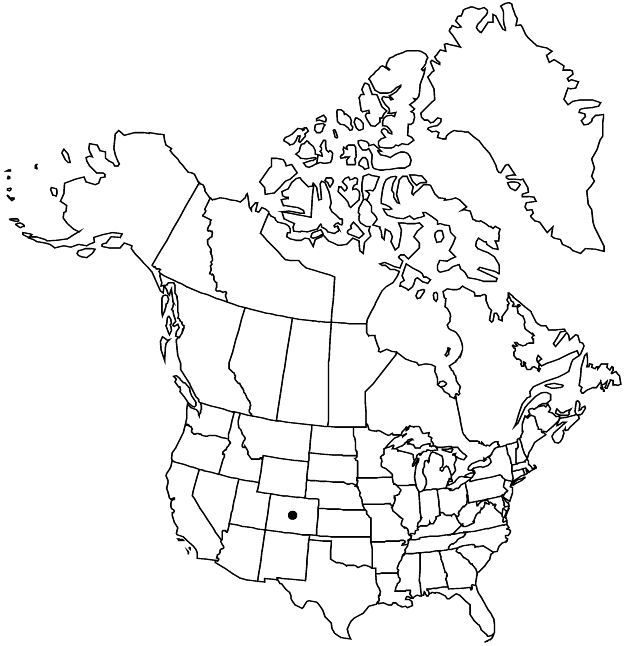Iliamna crandallii
Contr. Dudley Herb. 1: 228. 1936.
Stems 0.5–0.7 m; herbage sparingly stellate to glabrate, hairs obscurely stellate. Leaf blades deeply 5- or 7-lobed, 5–10 cm wide, lobes narrowly triangular, central lobe 2–3 times longer than lateral lobes, base cordate to truncate, margins coarsely serrate. Inflorescences solitary flowers in distal leaf axils, appearing racemose; involucellar bractlets linear, 8–10 × 1 mm, 1/2–2/3 as long as calyx. Flowers: calyx 10–15 mm, lobes lanceolate to lanceolate-ovate, 9–12 mm, longer than wide, longer than tube, apex acuminate; petals whitish or pinkish, 2–2.5 cm. Schizocarps unknown. Seeds 2–4 per mericarp, glabrous.
Phenology: Flowering Jul–Aug.
Habitat: Open forests, stream banks, mountain slopes
Elevation: 2000–2300 m
Discussion
Iliamna crandallii was described from near Steamboat Springs, Routt County, and is restricted to that area. It has been reported from Rio Blanco County (according to a specimen at COLO). T. A. Bodo Slotta (2000) stated that she collected fresh material of the species at Buffalo Pass and Fish Creek Falls.
Selected References
None.
